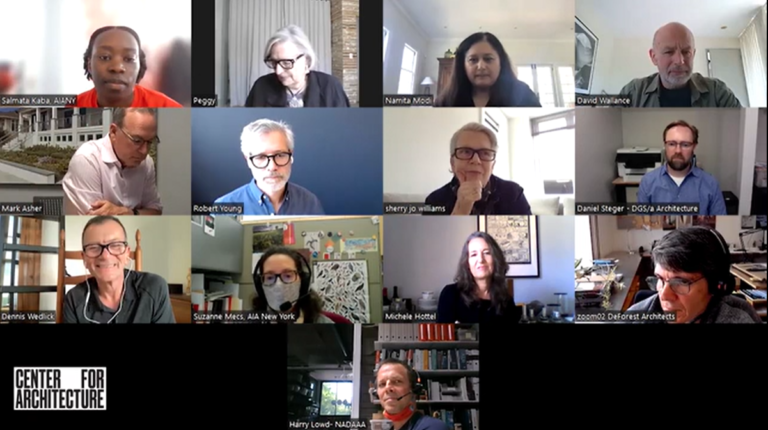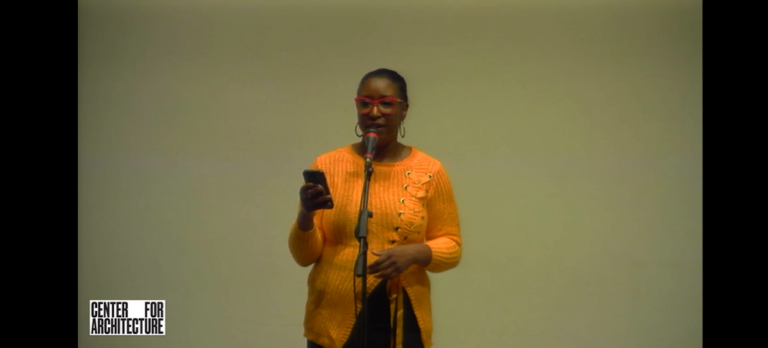In her long and notable architectural career, Minerva Parker Nichols (1862–1949) designed dozens of small and large private residences throughout the United States, several public buildings such as the New Century Clubs of Philadelphia and Wilmington, and unbuilt projects such as the Queen Isabella Association Pavilion at the 1893 Chicago World’s Fair. A highly sought after designer, she worked during the suffrage movement and attracted many notable women as clients. Minerva supervised all of her construction and was regularly published in news publications, particularly with the Philadelphia press, the city where she started her solo practice at the young age of 26. The New York Times justifiably headlined her obituary when she died. Yet, only a handful of her drawings survive, and after her death she was quickly forgotten as some of her built works were demolished and erased from history.
Today, Minerva is barely mentioned in the story of Philadelphia’s built environment. However, that is beginning to change. For more than a decade, Molly Lester, Associate Director of the Urban Heritage Project at the University of Pennsylvania, has been piecing together the professional and personal fragments of the life and career of this extraordinary woman architect, teacher, mother and wife. In 2023, Lester and a team from the Architectural Archives at the University of Pennsylvania mounted the first exhibition about Nichols; the accompanying book Minerva Parker Nichols: The Search for a Forgotten Architect (Yale University Press, 2024) was just released this Spring. What did that actually mean to be the first woman in the country to practice architecture independently? Why was she forgotten, like so many of her contemporary trailblazing female architects such as Louise Blanchard Bethune, FAIA (1856-1913)? How can professionals in the architecture industry, particularly those practicing residential architecture, preserve their history and works to remain relevant? Hear from architectural historians, writers, and the architectural photographer from the 2023 exhibit as they discuss these topics regarding Minerva and other forgotten women architects who have contributed so much to their America’s built environment.
About the Speakers:
Tizziana Baldenebro is the executive director at the Beverly Willis Architecture Foundation. An arts administrator, curator, writer, and critic, her practice focuses on emerging artists and designers, and she is an activist in the effort to produce equitable cultural centers. She is the Commissioner and Curator for the U.S. pavilion at the 2023 Venice Architecture Biennale. Previously, she served as the executive director at SPACES in Cleveland and has held positions at the Museum of Contemporary Art Detroit and at the Art Institute of Chicago within the Architecture & Design department. She sat on the board of FRONT International and is an editor-at-large at The Avery Review. She was a 2021 fellow in the National Association for Latino Arts and Culture Advocacy Leadership Institute and was a 2021 curator-in-residence at Red Bull Arts Detroit. Baldenebro received a Masters of Architecture from the School of the Art Institute of Chicago and a Bachelor of Arts degree in Anthropology from the University of Chicago.
Elizabeth Felicella is a New York-based architectural photographer. She photographs architecture and landscape with particular interests in public space and preservation. She works on assignments for designers and on long-term research projects which include a catalog of New York City’s branch libraries, a survey of the city’s shoreline, and an atlas of the periphery of Kennedy Airport. The treatment of photography as information through presentation and installation is a central aspect of her artistic practice. She previously collaborated with the Architectural Archives at Penn on the exhibition Shofuso and Modernism and the accompanying book, Uncrating the Japanese House.
Molly Lester is a historian of the built environment, with particular interest in the ways that women have shaped the American built environment since the 19th century. She is the Associate Director of the Urban Heritage Project at the University of Pennsylvania’s Stuart Weitzman School of Design, overseeing research, documentation, and engagement projects for historic buildings and cultural landscapes. In addition to her role with the Urban Heritage Project, Lester’s current research interests center on architect Minerva Parker Nichols (1862-1949); vernacular “building ghosts” in Philadelphia; and the She-She-She Camps for unemployed women during the New Deal. Lester holds a Master of Science in Historic Preservation from the University of Pennsylvania and a Bachelor of Architectural History from the University of Virginia.
Kate Reggev is an architect, project manager, historian, design writer, and educator with a decade of experience in the design, construction, and preservation worlds. She currently manages design and construction projects at Zubatkin Owner Representation, and previously was an Associate at the architecture firm of Beyer Blinder Belle.Kate also writes about architecture and design for publications like Architectural Digest and Dwell, teaches at Columbia in their Historic Preservation program, consults on preservation projects, and authors an historical column at online publication Madame Architect. She’s been quoted in The New York Times, The Wall Street Journal, The Washington Post, and Architectural Digest, and lectures across the country about architecture, preservation, and design. Kate holds a Master of Architecture and a Master of Science in Historic Preservation from Columbia University and a Bachelor of Arts in Architecture, cum laude, from Barnard College, Columbia University.
Tizziana Baldenebro, Executive Director, Beverly Willis Architecture Foundation
Elizabeth Felicella, Architectural Photographer
Margaret (Molly) Lester, Associate Director of the Urban Heritage Project, University of Pennsylvania Weitzman School of Design’s Graduate Program for Historic Preservation
Kate Reggev, Architect, Project Manager, Historian, Design Writer, and Educator, Zubatkin Owner Representation



